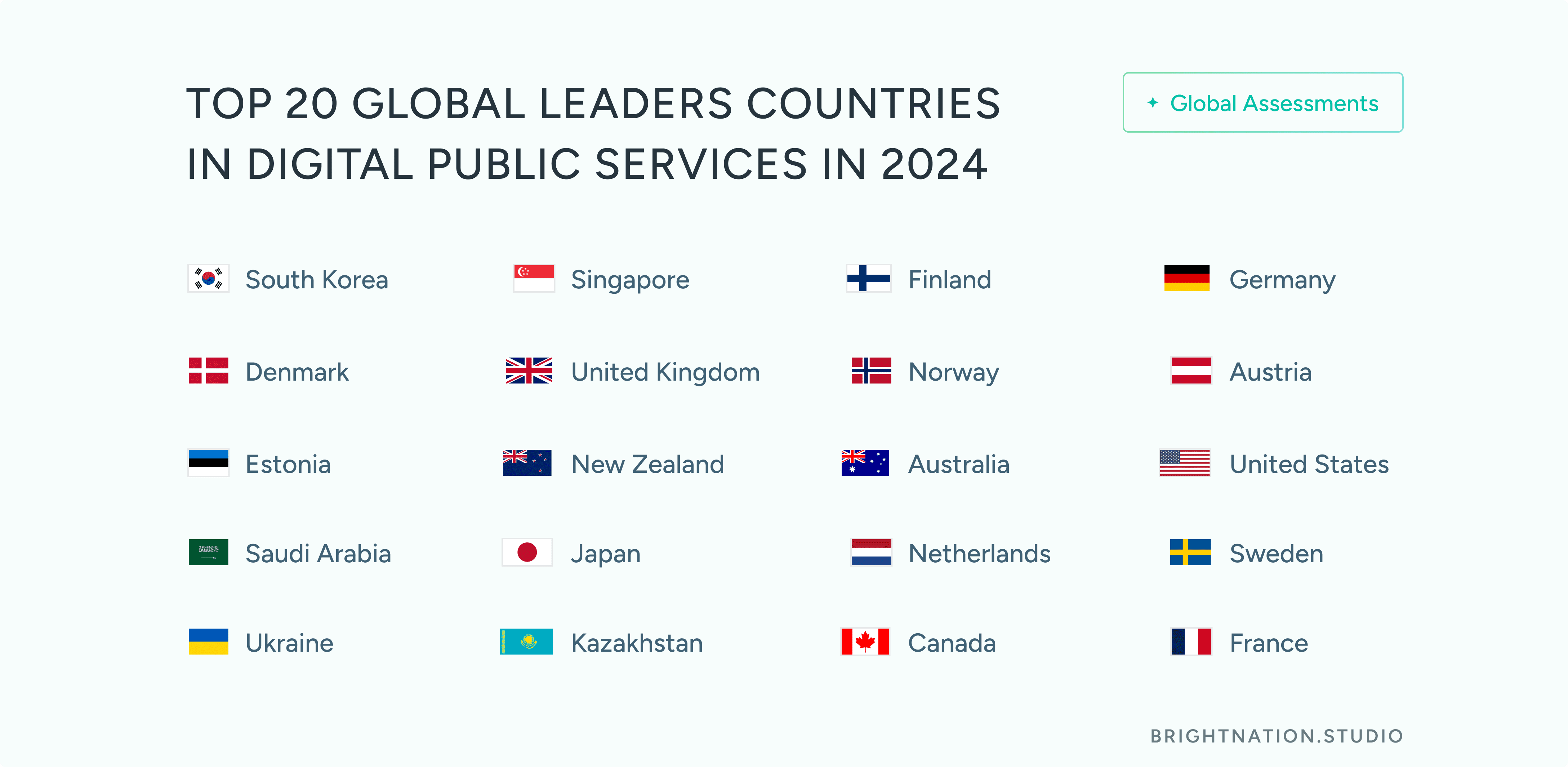Top 20 Global Leaders Countries in Digital Public Services in 2024
Digital public services play a crucial role in modern governance, making it easier for citizens to access essential services, file taxes, apply for benefits, and more, all through integrated digital platforms. The leading countries in this area have focused on creating citizen-centric services, prioritizing transparency, security, and accessibility.
This Top 20 ranking, based on global assessments such as the UN E-Government Development Index (EGDI) and other international benchmarks, highlights countries that have integrated technology into public services, excelling in e-governance, citizen engagement, and digital accessibility. Here is the Top 20 ranking of countries based on the development of digital public services in 2024, selected from a broader list that includes 193 countries.
Top 20 Countries for Digital Public Services in 2024:

1. South Korea. Leading with advanced e-governance and smart city initiatives, South Korea provides seamless, integrated public services online.
2. Denmark. Denmark’s digital infrastructure is world-class, offering fully integrated public services that prioritize user experience and transparency.
3. Estonia. Known as a digital nation, Estonia excels in e-residency, digital voting, and a wide range of public services accessible to all citizens and residents.
4. Saudi Arabia. Under Vision 2030, Saudi Arabia has revolutionized digital public services, modernizing its governance infrastructure with AI and digital platforms.
5. Ukraine. Ukraine’s “Diia” platform consolidates public services, marking it as one of the most innovative digital transformations in Europe.
6. Singapore. Singapore’s Smart Nation initiative ensures that public services are integrated, user-friendly, and accessible via various digital channels.
7. United Kingdom. The UK’s GOV.UK platform is a global model for consolidated digital services, focusing on accessibility and ease of use for its citizens.
8. New Zealand. New Zealand excels in e-government services, placing citizens at the heart of its digital transformation with its simple and efficient systems.
9. Japan. Japan continues to innovate, improving access to public services through advanced automation, AI, and IoT, focusing on a smart society.
10. Kazakhstan. Kazakhstan’s ambitious digital transformation strategy has positioned it as a regional leader, integrating public services into a user-friendly platform.
11. Finland. Finland continues to advance its digital services, providing secure, transparent, and efficient platforms for its citizens.
12. Norway. With a highly developed e-government system, Norway offers comprehensive digital public services, focusing on transparency and security.
13. Australia. Australia’s myGov platform centralizes public services, making it easier for citizens to interact with government bodies online.
14. Netherlands. The Netherlands is known for its mature digital public services, focusing on inclusivity and smart digital innovations for citizens.
15. Canada. Canada is modernizing its public services, investing in digital transformation to make interactions between citizens and government seamless.
16. Germany. Germany is improving its digital government services with enhanced integration and security, focusing on reducing bureaucratic hurdles.
17. Austria. Austria’s digital public service initiatives prioritize automation and citizen engagement, making government services more efficient and accessible.
18. United States. The U.S. is expanding its digital public services, particularly in healthcare and social services, through a growing emphasis on automation and user experience.
19. Sweden. Sweden’s focus on transparency and inclusivity in digital services helps maintain its high ranking in the e-governance landscape.
20. France. France continues to make strides in e-government by improving access to public services and integrating smart technology solutions.
Countries like Estonia and Denmark have led the way in digital IDs, allowing secure access to a variety of government services, while South Korea and Singapore excel in integrating smart city technologies into public services.
In recent years, countries such as Ukraine and Kazakhstan have emerged as innovators, utilizing mobile apps and AI to provide rapid, responsive services even in challenging environments. In Ukraine and Singapore, mobile-first platforms are leading the way. This trend reflects the broader global shift toward mobile access to government services, allowing citizens to interact with public services anytime, anywhere.
Globally, there is a growing emphasis on user experience. Countries like Finland and Canada are ensuring their public services are not only accessible but also easy to use and efficient. Security, especially data protection, is becoming increasingly critical as governments handle sensitive citizen data in an ever-digitizing world.
Automation, AI, and machine learning are driving the future of digital public services. These technologies help governments anticipate citizen needs, streamline processes, and deliver personalized services. As more nations adopt these technologies, the competition to provide the most efficient, user-friendly, and secure services continues to intensify.
Sources:
1. UN E-Government Survey 2022-2024
2. OECD Digital Government Index 2023
3. European Commission Digital Economy and Society Index (DESI) 2024